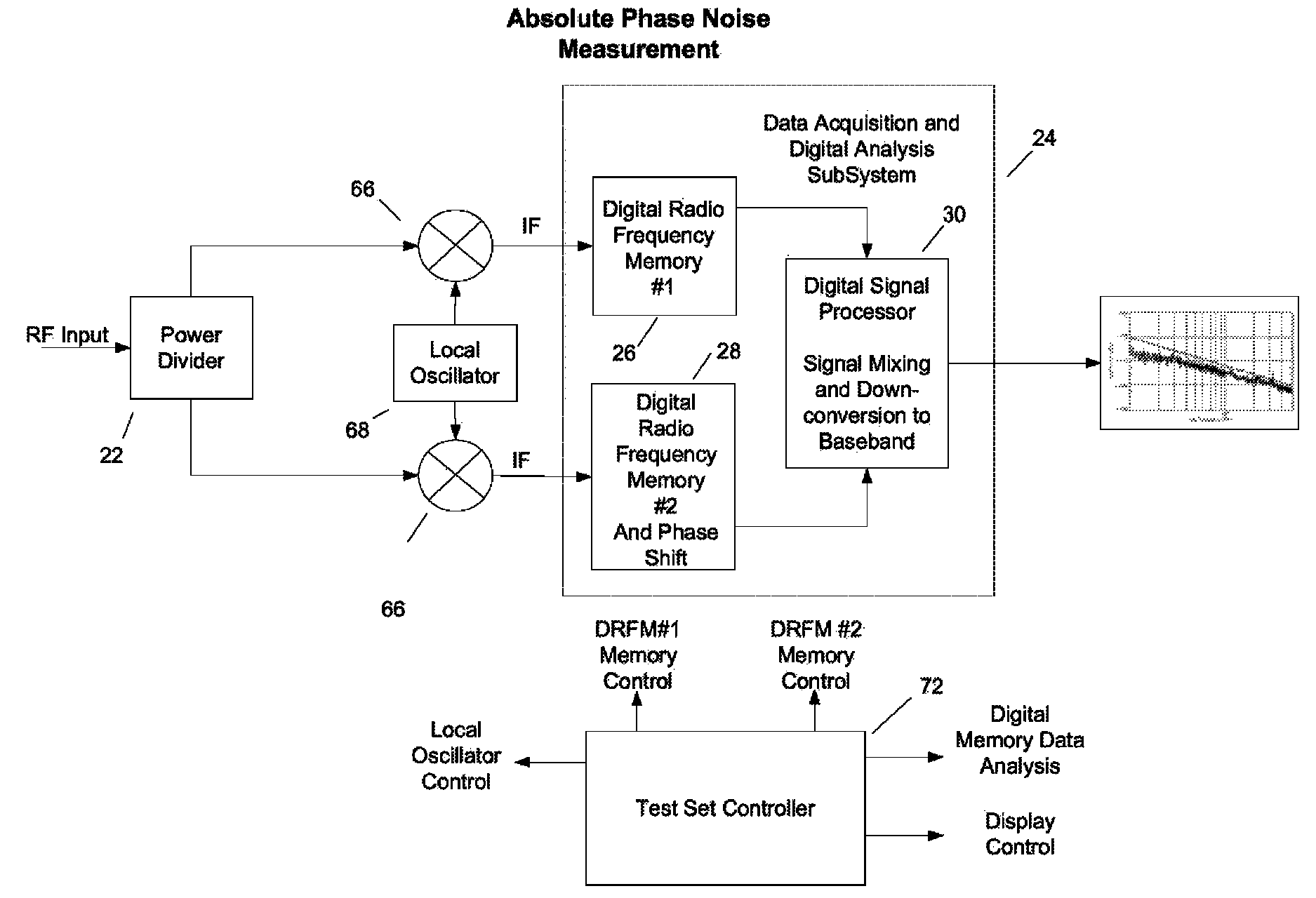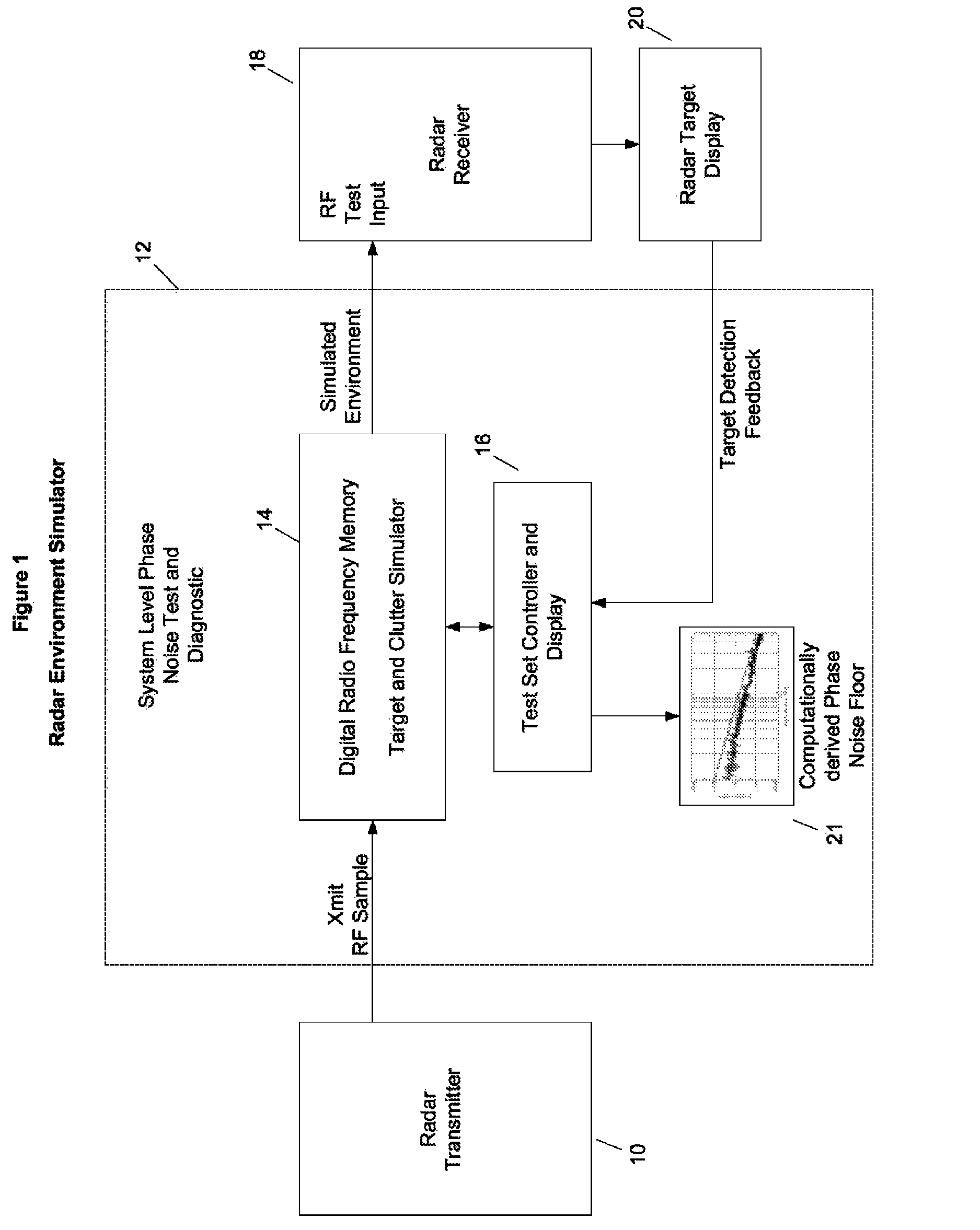Phase noise measurement system and method
- Summary
- Abstract
- Description
- Claims
- Application Information
AI Technical Summary
Benefits of technology
Problems solved by technology
Method used
Image
Examples
Embodiment Construction
[0021]DRFM Radar Target Sensitivity Evaluation:
[0022]Referring to the accompanying drawings wherein like reference numerals refer to the same or similar elements, FIG. 1 illustrates the use of a Digital Radio Frequency Memory (DRFM) as a Radar Target Sensitivity Evaluator. The DRFM provide a means of simulating targets and / or clutter at various radar cross sections and velocities. In an exemplifying use, the DRFM is used to identify one or more target detection weaknesses by simulating targets of various velocities and clutter backgrounds, i.e., a plurality of different combinations of target velocity and clutter background. In these combinations, the target velocity may be constant as the clutter background changes from one simulation to the next, the target velocity may change while the clutter background remains the same from one simulation to the next or both the target velocity and clutter background may change from one simulation to the next. As each target velocity is tested,...
PUM
 Login to View More
Login to View More Abstract
Description
Claims
Application Information
 Login to View More
Login to View More - R&D
- Intellectual Property
- Life Sciences
- Materials
- Tech Scout
- Unparalleled Data Quality
- Higher Quality Content
- 60% Fewer Hallucinations
Browse by: Latest US Patents, China's latest patents, Technical Efficacy Thesaurus, Application Domain, Technology Topic, Popular Technical Reports.
© 2025 PatSnap. All rights reserved.Legal|Privacy policy|Modern Slavery Act Transparency Statement|Sitemap|About US| Contact US: help@patsnap.com



